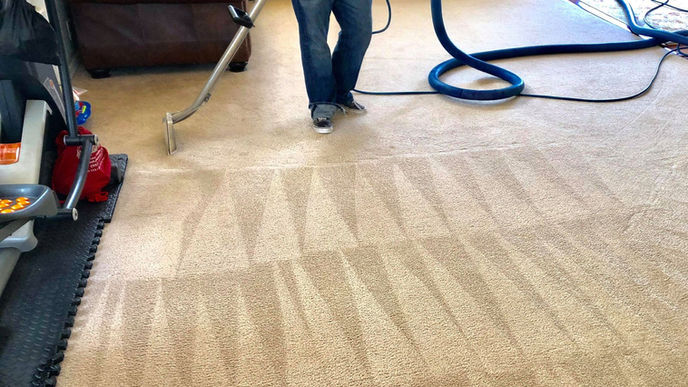

COOL FACTS
THE VERY BEST CARPET CLEANING SERVICE IN TEMECULA AND NORTH COUNTY SAN DIEGO

Did You Know?
Carpets are important cultural artifacts which represented stories, and how it impacted the whole world. Colors that represented certain animals from that region and patters that had different meanings according to the country or origin.
What is a carpet or area rug?
Rug and carpet, any decorative textile normally made of a thick material and now usually intended as a . Until the 19th century the word carpet was used for any cover, such as a cover or wall hanging; since the introduction of machine-made products, however, it has been used almost exclusively for a floor covering. Both in Great Britain and in the United States the word rug is often used for a partial floor covering as distinguished from carpet, which frequently is tacked down to the floor and usually covers it wall-to-wall. In reference to handmade carpets, however, the names rug and carpet are used interchangeably.
Handmade carpets are works of art as well as functional objects. Indeed, many Oriental carpets have reached such heights of artistic expression that they have been held in the same regard in the East as objects of exceptional beauty and luxury that masterpieces of painting have been in the West.( by Murray L Eiland)
When was installed carpet vacuum invented?
The greatest carpet-related patent that history can find in their artifact archives is a man named Warren P. Miller, a prominent architect, inventor, and minor politician in the mid 19th century, who created what could be best described as an inverted vacuum. Essentially, the 1883 invention involved rolling up the carpet onto a machine that would then blow off the carpet.
HOW WAS CARPET CULTURAL?
Carpet had different representation for different culture, some carpet was made to represent stories of battles and war, others told a story of a wedding, and some use to worship.
Carpets that represented different cultures, evolved from Iran, Pakistan, Afghanistan, Turkmenistan, India, China and also the Caucasus. These cultures hand made carpet since 500 BC, it’s likely that the first rugs were made several thousand years ago in the Central Asian Plains. Nomadic tribes people would use rugs to shield themselves from the stinging cold of winter, on surfaces in their homes such as on the floor and they used them on their tents for warmth, to protect them from snow and sleet. They also use rugs as surfaces for eating and for transporting materials. Wool has extreme durability and adaptability, rugs were an item that could be used repeatedly.
Iran
The latest rug made by Iran dated back to the early 500 BC. Scientists consider that the pile-woven Pazyryk carpet discovered in Siberia is the oldest carpet found. According to the scientist that discovered this rug they believe it dates back to have been a product of the first Persian Empire.
Pakistan
In the 11th century it was believed that carpet weaving was starting in the Pakistan region. Before it was known to now as Pakistan this high-valued and exquisite form of art of carpet weaving was brought to the Indian subcontinent by the first Muslim conquistador, the Afghan Ghaznavids and the Ghauris for the Samanid Dynasty.
Afghanistan
A one of a kind Afghan rug made an appearance in the early 1980s which was different from the original Persian style. This rug came from an extremely brutal ownership of Afghanistan by the Soviet Union.
Turkmenistan
Turkmen who were found by archeologists in the 6th century BC. made carpets which were 100% pure wool from the famous Karakul sheep. These are rugs containing red to red brown color and geometric shapes such as octagonal gul motifs. They lived in the north and north-east of Iran.
India
In 1520 AD Abū al-Fatḥ Jalāl al-Dīn Muhammad Akbar the greatest Mughal emperor of India in his times. Akbar brought carpet weavers from Persia to his palace in Agra. This made the foundation of the carpet weaving tradition in India. It just happened to mold together with Indian art.
China
2,000 years ago the first rugs of the imperial court were made from porcelain painting or silk weaving produced in China. The knotting carpets were introduced somewhere in the 15th and 17th century in China. The rugs that were produced were inspired by the distinguished dragon pattern. Some carpets were produced with taostic or Buddhist origins but only occasionally. The oldest carpets were thick, soft and surprisingly very flexible. These carpets were manufactured in the region of Kansu, Ningxia, Suiyan and in Inner Mongolia adjacent to the city of Baotou.
Caucasus
The typical knot density of a Caucasus rug is 120.000-250.000 knots/sqm; this rug production dates back to the 17th century. These carpets were woven for daily use in the humble tribe homes that lived in the inhabited region’s.
WHAT DOES THE PATTERN IN WEVING MEAN TO OUR ANCESTORES?
Some knots and colors according to the carpets that were made in certain regions of the world were made with different material. Since most of the carpets were introduced by conquistadors or by transporting goods they tend to travel. In some countries the original woven technique still exists, but now they use other materials such as; synthetics, or mixed materials like nylon, or cotton. Wool rugs are still made to this day but only in remote or small regions that later trade there artifacts for resources.

















